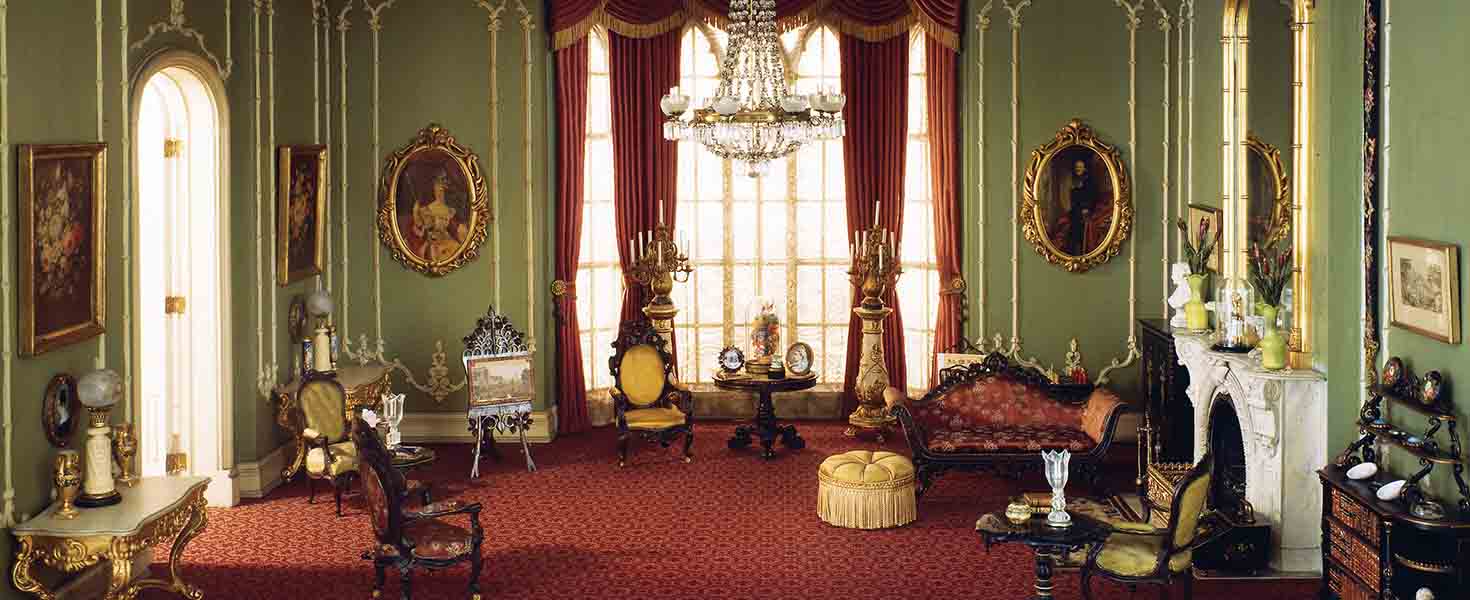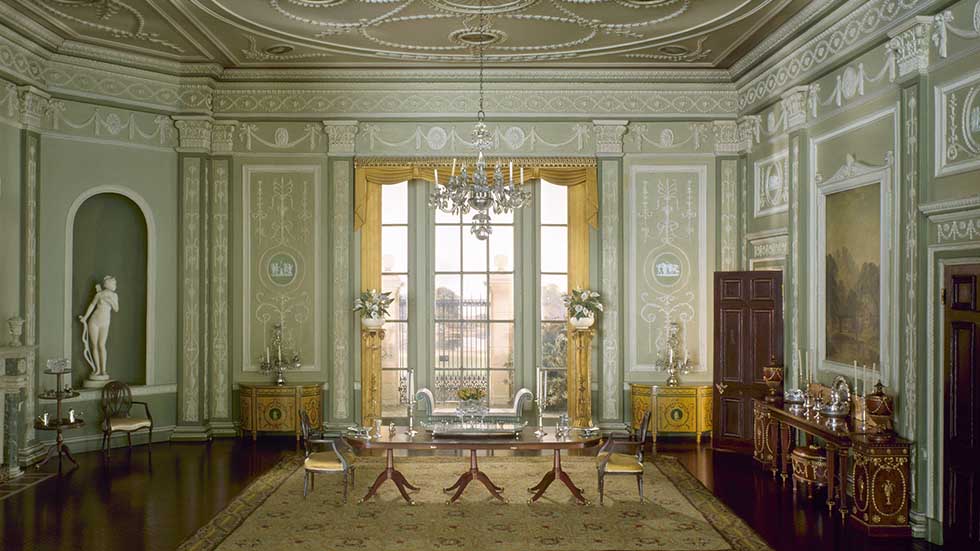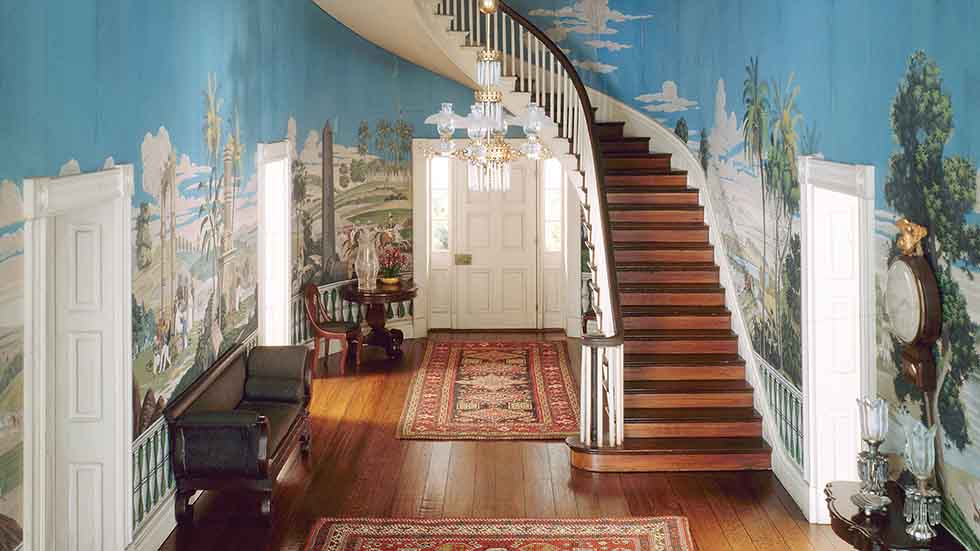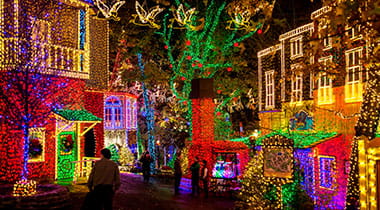Every visitor to the Art Institute of Chicago encounters its famous characters: a stony-faced Midwestern couple and their pitchfork, three silent New Yorkers in a brightly lit corner diner, some 30 park-goers (plus a few dogs and one monkey) who have come to recreate on the Seine. But these ever-intriguing subjects, found within the frames of three of the museum’s most iconic works—Grant Wood’s American Gothic, Edward Hopper’s Nighthawks, and Georges Seurat’s A Sunday on La Grande Jette – 1884—are just the beginning.
For those who seek them out, a wealth of decorative arts treasures, justifiably famous in their own right, also awaits. Two collections offer the viewer a myriad of miniature worlds (one representing the man-made, one the natural); the other emphasizes the monumental. Like the very best paintings, each challenges you to look, and then look again. Once you find these repositories, you’re bound to get lost.
Mrs. James Ward Thorne. E-10: English Dining Room of the Georgian Period, 1770–90 (detail), about 1937. Gift of Mrs. James Ward Thorne.
SMALL WONDERS
That’s especially the case with the Thorne Miniature Rooms, the vision of Narcissa Niblack Thorne, whose interest in art, design, and history was fostered by the succession of glittering French palaces and imposing English castles that she experienced during several European grande tours.
Her eagerness to share that education, combined with her enthusiasm for collecting miniatures, led her to form a workshop where, from 1932 to 1940, some three dozen artisans meticulously assembled and outfitted about 100 minutely scaled (1 inch equals 1 foot) period rooms. The exact number is hard to pinpoint since a few were dismantled, but the Art Institute of Chicago now holds 68, and another 31 are on display at several other American museums.
Ornamented with paneling, moldings and plasterwork; convincingly illuminated to evoke sun-dappled and moonlit rooms; and featuring an abundance of tiny furniture, accessories, paintings, rugs, and wallcoverings, the rooms mainly depict English, French, and American settings from the 18th and 19th centuries. There’s a German sitting room, too, as well as one representation each of a Chinese and Japanese interior.
The few contemporary rooms are especially fun, particularly a crimson-inflected San Francisco penthouse whose stripped-down angles and Kondo-esque minimalism are refreshing after such a surfeit of detail.
Although a greyhound curls comfortably before the marble fireplace of a composite 16th-century Tudor great hall—which also features a showpiece carved screen, scrolled plaster ceiling, and a tiny oil painting of Mary Queen of Scots—Thorne never populated her tableaus with people for fear of dumbing down the rooms.
But while their intent is undoubtedly to instruct and their presence certainly beautiful, they’re not always historically accurate, cautions Ellenor Alcorn, curator of European Decorative Arts. Their true appeal, she says, is simply that they’re entrancing.
“You have to concentrate so hard to take it all in,” says Alcorn. “The rooms are like scaled-down stage sets,” she says. “You’re drawn into the illusion, then supply your own drama.”
Remove the idea of a narrative, and the same could be said for the Arthur Rubloff Collection of Paperweights. The assemblage is named for the real estate developer who, in between amassing a fortune and creating the moniker “Magnificent Mile” for Michigan Avenue’s tony shopping district, collected and then donated 1,200 antique glass paperweights to the institute. The fashioning of these objets d’art first arose in France during the mid-1800s when prestigious crystal purveyors such as Baccarat and Clichy introduced them as more affordable glass trinkets. While the pieces exhibit a variety of techniques and styles, nature remains a dominant theme.
“The 19th century was a period of cataloguing and scientific analysis, so often the weights were used to render newly discovered specimens,” says Alcorn.
The artistry of the 800 or so Rubloff pieces on display, along with that of an intriguing selection of contemporary works, goes way beyond the glittery snow globes of our youth or the branded acrylic giveaways that have become a staple of swag bags everywhere. The amazement of these orbs stems from their craftsmanship. While their designs may appear to be painted on the inside, they are actually formed by individually melted pieces of glass.
“The paperweights have a devoted following,” says Alcorn. “People are not only fascinated by how they’re made, but they also relate to the sense of intimacy and contemplativeness that they encourage.”
Mrs. James Ward Thorne. A-31: Tennessee Entrance Hall, 1835 (detail), about 1940. Gift of Mrs. James Ward Thorne.
BIG IMPRESSIONS
Not all well-designed works at the museum come in small packages, though. Ask Alison Fisher, associate curator of Architecture and Design, about the museum’s Fragments and Futures gallery, an installation of 85 ornamental building components, and her voice assumes a touch of reverence.
“I just love this collection,” she says, “especially because of the space in which the pieces are displayed.”
Dramatically set under a huge skylight on the second level of the building’s grand staircase, most of the terra-cotta facades, metal elevator grilles and leaded glass windows installed on the walls were rescued from the city’s historic buildings as they were demolished or renovated. The gallery itself is wrapped by a decorative stone molding that remains tantalizingly incomplete.
“If you look carefully, you’ll notice that it just stops abruptly,” Fisher points out. “That’s because work on it was halted with the arrival of the Great Depression, and to me, that’s a metaphor for the fragments collection, where the whole point is to talk about the history and evolution of architecture.”
This material history of Chicago’s built environment includes remnants that once adorned structures from such Windy City master builders as Louis Sullivan, Frank Lloyd Wright, and Daniel Burnham. But other works resonate more for the stories they tell. Consider the tracery of a cast-iron railing from the U-shaped atrium of Mecca Flats, an opulent apartment complex in the South Side’s Bronzeville neighborhood. Erected in 1891 in connection with the World Columbian Expo, it became a tourist attraction before morphing into a gathering place for the artists and intellectuals of the city’s Black renaissance during the 1930s.
One member of that group, Pulitzer Prize-winning author Gwendolyn Brooks later wrote a long narrative poem excoriating the squalid and crowded tenement-like conditions that eventually developed there, leading to its demolition in 1952.
“So many of these pieces are like this,” says Fisher. “They’re dynamic but fraught.”
The same might be said of miniature rooms and paperweights. All three collections encourage the viewer to tease out their hidden stories.


















